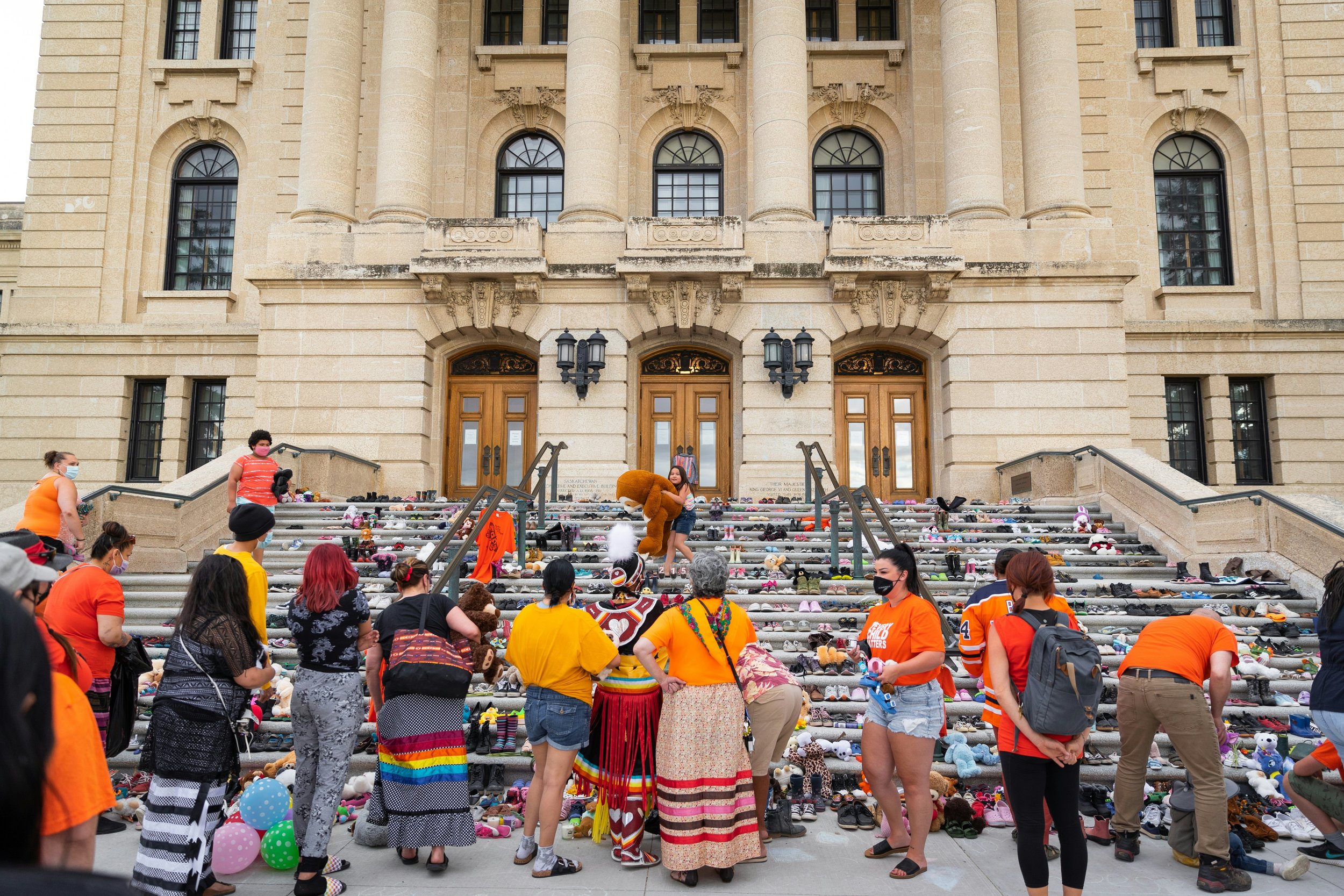National Day For Truth And Reconciliation
– C1-C2 (advanced) –
Practice Your Listening Comprehension
Practice Your Reading Comprehension
Holidays in Canada are not always celebratory; for example, September 30th: National Day For Truth And Reconciliation (formerly known as Orange Shirt Day). This holiday serves as remembrance for the Indigenous children and adult survivors who were forcibly taken away from their families and communities to be assimilated to the Euro-Canadian lifestyle via emotional, psychological, and physical abuse and torture in residential schools. For over 160 years, from 1831 to 1996, international and local authorities collaborated on this “education” system, lying to the general public of Canada that these were nothing more than “regular” schools attended by Canadian children of all ethnic backgrounds. This government-led propaganda eventually drove non-Indigenous Canadians to disbelieve Indigenous people when they spoke up on what was truly happening in the country, specifically to their community; eventually this disbelief turned into resentment, which fed into Indigenous stereotyping, perpetuating further the discrimination of Indigenous peoples that had already existed systemically throughout Canada. Unfortunately, much of this discrimination still exists today.
For younger generations, those who were in elementary school after 1996, many classes like Social Studies, Native/Indigenous Studies and English Language Arts may have taught them the horror of the residential school system. Unfortunately, most older generations, those who were educated before 1996, remained largely unknowledgeable or ignorant about the situation until 2021, when a news article was published detailing the discovery of hundreds of dead Indigenous children in unmarked graves on the grounds of a former residential school. This resulted in a national outcry, fueled by angered Canadians, both Indigenous and otherwise. Those from older generations were reported feeling betrayed by the government, while Indigenous communities expressed a fountain of complex emotion: heartbrokenness, for their people and their children who were stolen and murdered; gratefulness, for the truth of their suffering was finally out in the open being believed; and furiousness, with the government for hiding the truth and with general Canadian society for refusing to believe them for so long.
In an attempt to right the wrongs that were done, “National Day For Truth And Reconciliation” was made a federal statutory holiday. It is a reminder that we, as a Canadian society, are not perfect; we have much to do to learn and grow from our mistakes as a nation. As such, a public broadcast detailing a performance review of the 94 Calls To Action (an official list of things that the Government of Canada can do to help reconcile with the Indigenous peoples of the land and create a healthy future of peaceful coexistence) is conducted every year, keeping both the government and Canadian society accountable to making a true effort to change in order to avoid repeating something as damaging as the residential school system in the future.
In addition to this review, there are a variety of other activities that Canadians do to commemorate this holiday:
wearing an orange shirt, often with the phrase “every child matters” on it, in solidarity with Indigenous communities and the children and families who were affected by the residential school system
hanging a small orange shirt in the window of a home or business to show said solidarity
placing a teddy bear and/or children’s shoes on the steps of a public building (e.g. city hall, church, school, etc.) as an altar/grave honouring the children who were lost
attending or watching National Day For Truth and Reconciliation events
listening to speeches of residential school survivors
learning about Indigenous history and culture in Canada
visiting a museum exhibition on Indigenous topics
familiarizing oneself with Indigenous law in Canada
going to seminars on decolonization
participating in awareness protests
learning how to be a supportive ally to the Indigenous community
and much more…!
News Special on National Day For Truth and Reconciliation, 2022*
*NOTE: It is common for Canadian national broadcasts to be multilingual (English, French, a variety of Indigenous languages). Anything said in a different language from English will be either overlaid with dubbing, or interpreted in the English language immediately afterwards.
For more information about National Day For Truth And Reconciliation, please visit the following links:
Do you have a holiday similar to National Day For Truth And Reconciliation? What do people typically do on that day? Practice your English by letting me know in the comments below.
RELATED ARTICLES
ATTRIBUTION
“Every Child Matters” Flag photo courtesy of chris robert on Unsplash
Public Altar, Regina, Canada photo courtesy of Tandem X Visuals on Unsplash
Awareness Protest, Vancouver, Canada photo courtesy of Gabriel Dalton on Unsplash


